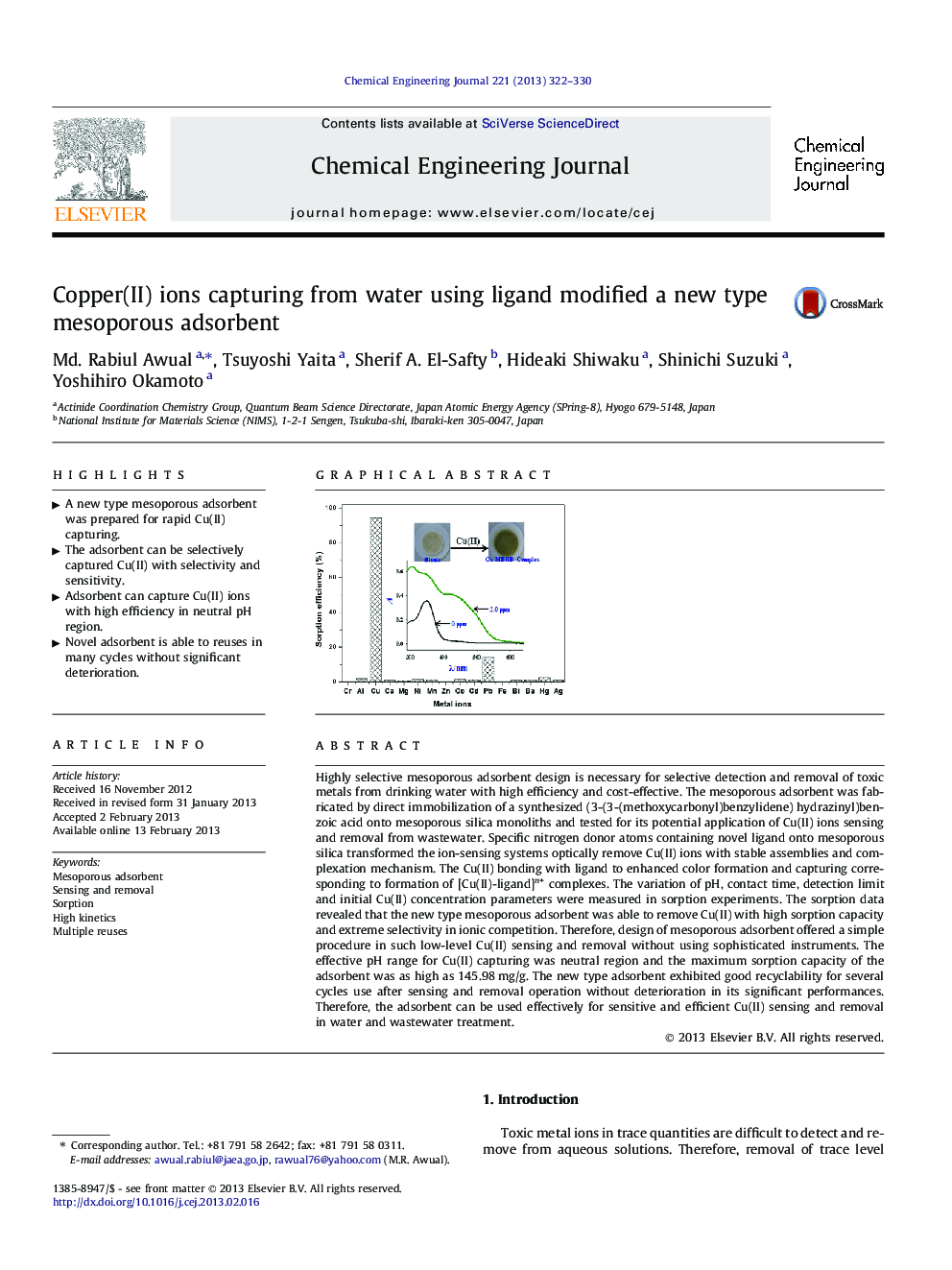| Article ID | Journal | Published Year | Pages | File Type |
|---|---|---|---|---|
| 148459 | Chemical Engineering Journal | 2013 | 9 Pages |
Highly selective mesoporous adsorbent design is necessary for selective detection and removal of toxic metals from drinking water with high efficiency and cost-effective. The mesoporous adsorbent was fabricated by direct immobilization of a synthesized (3-(3-(methoxycarbonyl)benzylidene) hydrazinyl)benzoic acid onto mesoporous silica monoliths and tested for its potential application of Cu(II) ions sensing and removal from wastewater. Specific nitrogen donor atoms containing novel ligand onto mesoporous silica transformed the ion-sensing systems optically remove Cu(II) ions with stable assemblies and complexation mechanism. The Cu(II) bonding with ligand to enhanced color formation and capturing corresponding to formation of [Cu(II)-ligand]n+ complexes. The variation of pH, contact time, detection limit and initial Cu(II) concentration parameters were measured in sorption experiments. The sorption data revealed that the new type mesoporous adsorbent was able to remove Cu(II) with high sorption capacity and extreme selectivity in ionic competition. Therefore, design of mesoporous adsorbent offered a simple procedure in such low-level Cu(II) sensing and removal without using sophisticated instruments. The effective pH range for Cu(II) capturing was neutral region and the maximum sorption capacity of the adsorbent was as high as 145.98 mg/g. The new type adsorbent exhibited good recyclability for several cycles use after sensing and removal operation without deterioration in its significant performances. Therefore, the adsorbent can be used effectively for sensitive and efficient Cu(II) sensing and removal in water and wastewater treatment.
Graphical abstractFigure optionsDownload full-size imageDownload as PowerPoint slideHighlights► A new type mesoporous adsorbent was prepared for rapid Cu(II) capturing. ► The adsorbent can be selectively captured Cu(II) with selectivity and sensitivity. ► Adsorbent can capture Cu(II) ions with high efficiency in neutral pH region. ► Novel adsorbent is able to reuses in many cycles without significant deterioration.
